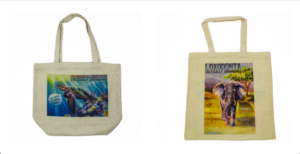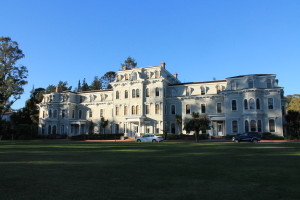
offers biology students more learning opportunities. (Jennifer Smith)
The Mills vertebrate collection is new and improved this semester as a result of a grant from the Joseph and Vera Long Foundation.
Mills’ vertebrate collection, housed in the Natural Sciences Building, has been at Mills as long as El Campanil’s bells. The collection, like the bells, was donated by then-trustee David Hewes in the early 20th century. It has grown and evolved a great deal since then and continues to hold an honored position in the biology department.
In recent years, the collection and the lab it lives in have been in dire need of updates and restoration. The answer to this problem came in July 2011, when the Mills biology department was awarded a $2.5 million grant to promote female leadership in the sciences.
In Fall 2012, Assistant Professor of Biology Jennifer Smith took charge of the vertebrate lab and used a portion of the grant to begin implementing much needed upgrades to the collection. She and her students have spent the past three years acquiring new pieces for the collection as well as cataloging, organizing and salvaging the aging specimens.
One of the many students contributing to the lab updates, Lauren Burke, a senior biology major, has been helping Smith create an online database for the collection. This will improve accessibility to the collection for students and professors, and provide opportunities for collaboration with neighboring institutions.
“I am helping to maintain and photograph…and organize [the specimens],” Burke said. “At first, nobody knew where anything was.”
According to Smith, updating the collection has been a constant learning process, as she and her students have spent much of their time developing efficient systems of curating the specimens with the help of institutions like California Academy of the Sciences, UC Berkeley and the Smithsonian.
These updates have been implemented just in time for the return of the popular Evolution and Vertebrate Biology classes in Spring 2016, which is taught every other year. Pieces of the collection have been used in biology courses in the past, but next semester, several biology courses have been updated to make better use of the expanded and more accessible collection.
“We’ve got hundreds of birds, we’ve got hundreds of skulls, we’ve got skins, we’ve got an entire invertebrate collection as well,” Burke said. “We have a really amazing collection and I think it’s super underutilized.”
The goals of restoring the natural history collection are to both increase interest in the biology program by prospective students and to enhance learning opportunities for existing students of Mills.
“It’s just going to be much more welcoming and accessible,” Smith said of the improved collection. “Everything is very organized now, and the learning opportunities are endless.”
Smith believes that the restored specimens and expansion of the collection will improve the experience and education of biology students.
“What’s special about this collection is students can actually pick up a skull and hold it in [their] hands, so you actually have that tactile, three-dimensional aspect of learning,” Smith said.
Faculty and students in the biology department have done a great deal of work to improve the facility since 2012, but they’re not done just yet.
Smith hopes to complete an online database of the vertebrate collection as well as a digital image library of all the specimens, so that students can study and refer to pieces in the collection outside of the classroom as well.
Many students who had led the charge in improving the lab have since graduated, and Smith is now seeking students to help her finish the work that is now so near completion.
“There’s always more work to be done,” Smith said.





